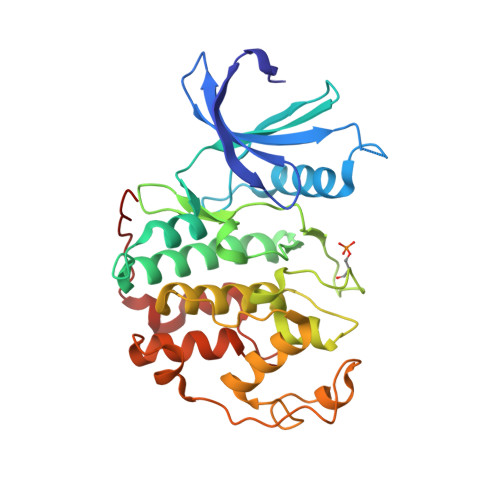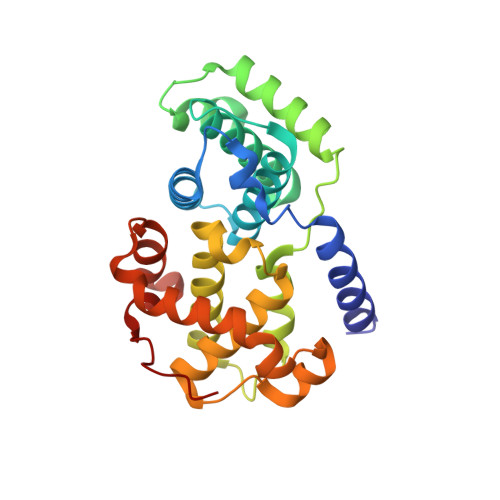An integrated chemical biology approach provides insight into Cdk2 functional redundancy and inhibitor sensitivity.
Echalier, A., Cot, E., Camasses, A., Hodimont, E., Hoh, F., Jay, P., Sheinerman, F., Krasinska, L., Fisher, D.(2012) Chem Biol 19: 1028-1040
- PubMed: 22921070
- DOI: https://doi.org/10.1016/j.chembiol.2012.06.015
- Primary Citation of Related Structures:
4EOI, 4EOJ, 4EOK, 4EOL, 4EOM, 4EON, 4EOO, 4EOP, 4EOQ, 4EOR, 4EOS - PubMed Abstract:
Cdk2 promotes DNA replication and is a promising cancer therapeutic target, but its functions appear redundant with Cdk1, an essential Cdk affected by most Cdk2 inhibitors. Here, we present an integrated multidisciplinary approach to address Cdk redundancy. Mathematical modeling of enzymology data predicted conditions allowing selective chemical Cdk2 inhibition. Together with experiments in Xenopus egg extracts, this supports a rate-limiting role for Cdk2 in DNA replication. To confirm this we designed inhibitor-resistant (ir)-Cdk2 mutants using a novel bioinformatics approach. Bypassing inhibition with ir-Cdk2 or with Cdk1 shows that Cdk2 is rate-limiting for replication in this system because Cdk1 is insufficiently active. Additionally, crystal structures and kinetics reveal alternative binding modes of Cdk1-selective and Cdk2-selective inhibitors and mechanisms of Cdk2 inhibitor resistance. Our approach thus provides insight into structure, functions, and biochemistry of a cyclin-dependent kinase.
Organizational Affiliation:
Université Montpellier I, 34000 Montpellier, France.



















